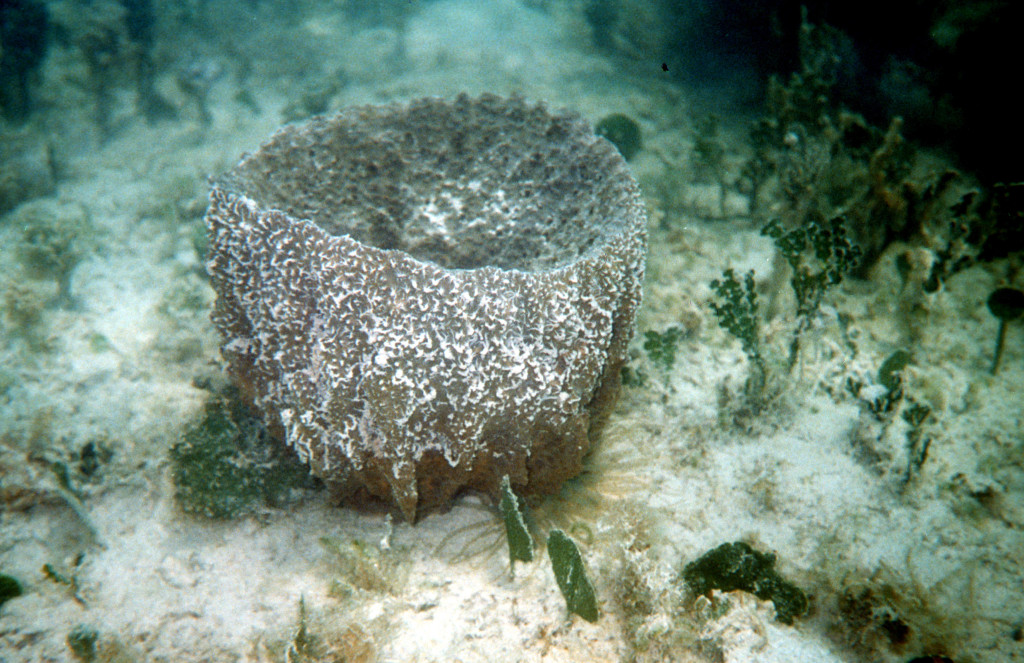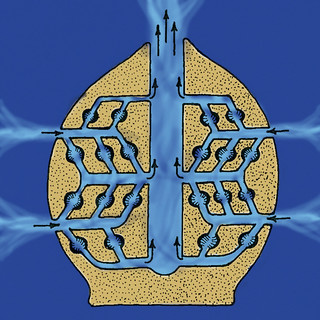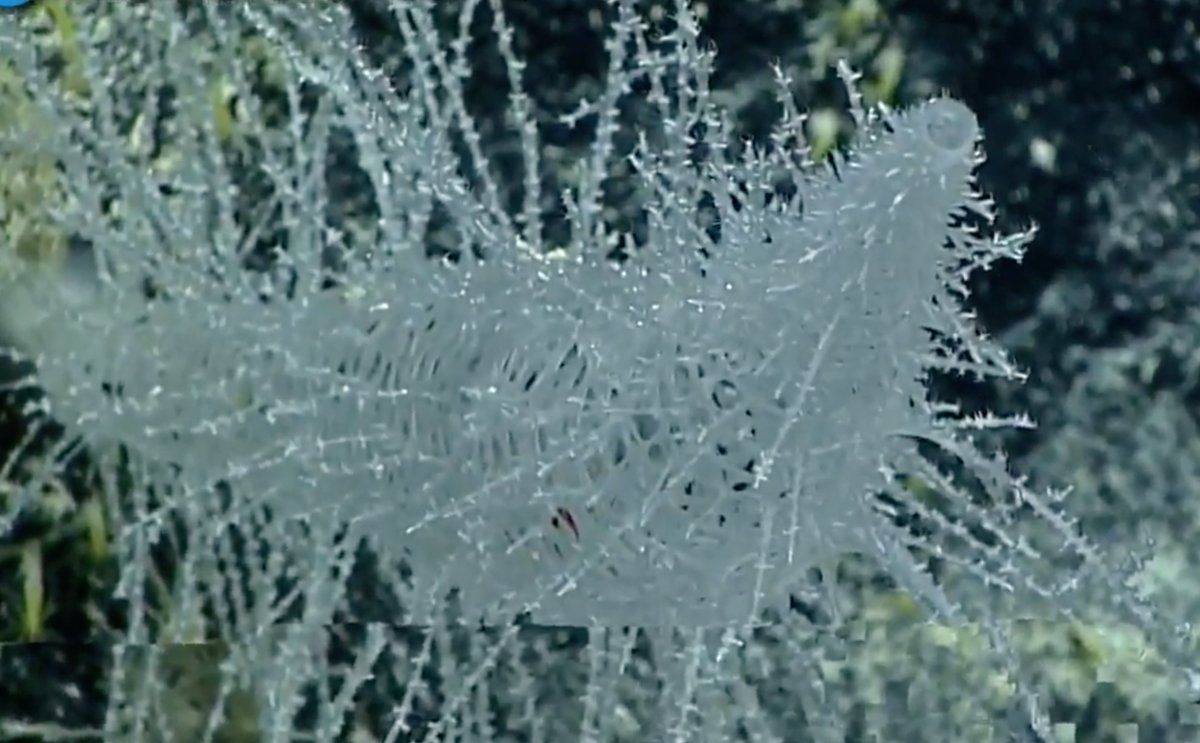Everyone has heard of sponges, and many know they grow in the ocean. But fewer are aware that sponges are actually animals. When we think of animals, we think of something that crawls around seeking food and laying eggs periodically. Sponges are not like that. They are “blob” looking creatures sitting on the ocean floor. At first glance you might call them fungi, or maybe some weird form of algae – but they are animals, the simplest form of animal life on the planet.
What makes them animals is the lack of cell walls and chlorophyll. Fungi also lack chlorophyll, but they do possess cell walls – so, are classified differently. Because animals lack chlorophyll they cannot produce their own food – and must consume creatures in order to obtain their needed sugars. So, what do sponges “hunt”? They feed on plankton in the water column – many of the microscopic creatures we have already written about in this series.
The sponge body is basically a colony of individual ameboid and flagellated cells. These small cells attach to the substrate and begin to reproduce sexually and asexually to form the colony. As they grow, they form a series of pores found on the exterior of the mass. The flagellated cells – called collar cells – move their flagella to generate a current. This current draws in seawater – along with its plankton – where the colony, both the flagellated and ameboid cells, feed. As the colony grows the exterior pores lead to channels and canals where the cells live and eventually empty into a larger cavity known as the atrium. Here the water moves upward and exits the sponge through an opening called the osculum. Waste from feeding exits the sponge through the osculum as well.
As the colony grows it is supported by a series of tiny spike-like structures called spicules. Spicules are made of different materials and are one method of separating and classifying the different sponges. One group of sponges are known as the calcareous sponges – their spicules are made of calcium carbonate and are rough to the touch. Another group are known as the “glass” sponges – their spicules are made of silica and are sharp-prickly to the touch. A third group are known as the bath sponges – their spicules are made of a softer material called spongin. It is this third group that was used for centuries for both bathing and washing.
These simple creatures play an important role in the ecology of marine systems. As filter feeders, they remove material from the water column improving water clarity and quality. They remove excess nitrogen and play a role in the carbon cycle. They provide habitat for numerous small marine creatures where they can hide from predators and find food.
Sponges need a hard substrate to grow on and thus are more abundant in the coral reefs of south Florida. Locally I have only found them in the seagrass beds. But there they do play the same ecological role you would find them doing on coral reefs. They are one of the less encountered creatures of the northern Gulf.
- Rattlesnakes on Our Barrier Islands; Part 4 – Thermoregulation - December 29, 2025
- Rattlesnakes on Our Barrier Islands; Part 3 – Envenomation - December 22, 2025
- St. Joe Red Tide Claiming Terrapins - December 15, 2025



